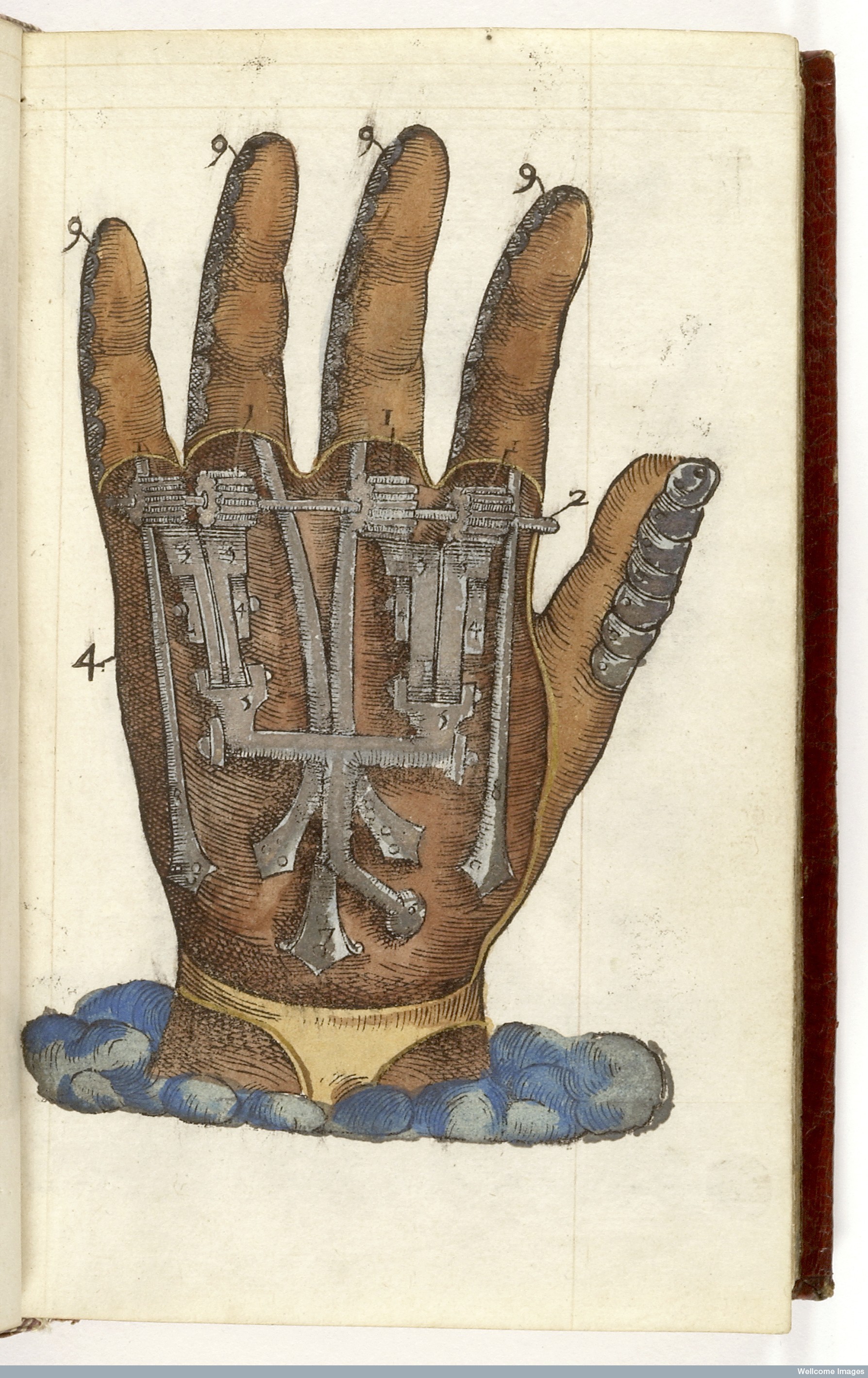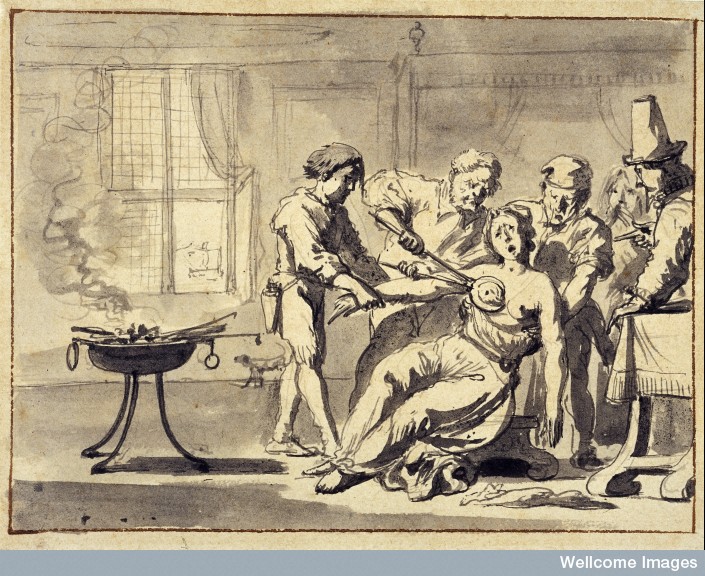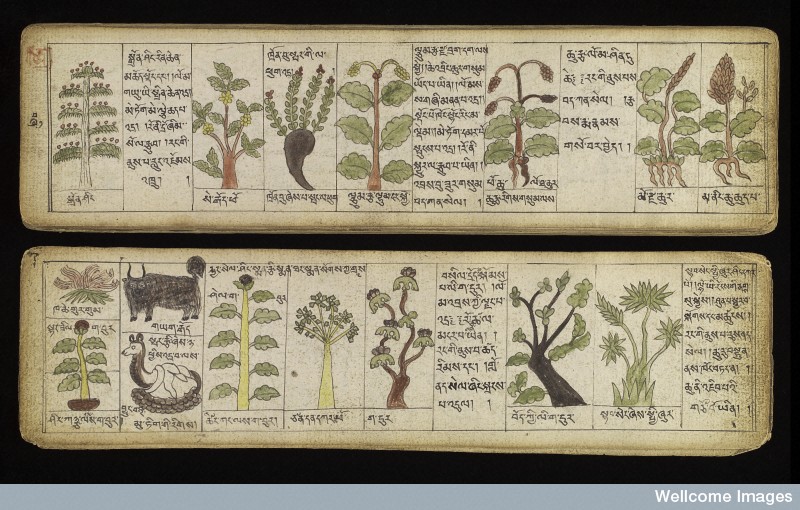The Wellcome Library, in London, specializes in the history of medicine. While the institution has long offered a good digital collection for browsing, the library announced yesterday that they are making more than 100,000 historical images free to download under a Creative Commons CC-BY license. (Users can distribute, edit, or remix at will; the license even allows for commercial use, with attribution.)
The Wellcome’s holdings represent the institution’s long-term interest in collecting art related to medicine, the body, public health, and medical science. The drop-down menu labeled “Technique” in the standard search box returns a staggering array of types of visual culture, from aquatint to carving to fresco to X‑ray. The library reports that the earliest image available is from 400 AD: a fragment of papyrus from an illustrated herbal manuscript, featuring a faded color drawing of a plant.
Some images in the collection are, perhaps unsurprisingly, squirm-inducing (an 1851 Japanese woodcut showing an amputation of the lower leg; a Dutch etching depicting a 17th-c mastectomy; a German illustration showing 17th-century monks performing eye surgery). But there is plenty of beauty here, as well. I loved an a 19th-c woodcut of a sumo match, and a Tibetan illustrated manuscript used in the production of medicines.
Browsers interested in dipping a toe into the stream of images may try out the galleries listed on the Images homepage. The “Olympic Sports” gallery offers an 1829 engraving of the famous conjoined twins Chang and Eng holding badminton rackets, and an 1870 illustration of recommended ring exercises for lady gymnasts. The “Witchcraft” collection (under the “Favourites” tab) contains many illustrations from historical books covering witchcraft in Europe and the American colonies, along with a more surprising 19th-century Malayan black-magic charm.
Rights-managed images are marked as such in the thumbnail results that appear after a search. Although the archive requires you to enter a CAPTCHA to access the free images, you can select several thumbnails on the search-results page in order to bulk-download files for many images at the same time. The sample files I requested arrived on my desktop at 300 dpi.
The image above is an illustration of a mechanical hand from 1564.
h/t @kirstinbutler
Rebecca Onion is a writer and academic living in Philadelphia. She runs Slate.com’s history blog, The Vault. Follow her on Twitter: @rebeccaonion.
Related Content:
The Getty Puts 4600 Art Images Into the Public Domain (and There’s More to Come)
The National Gallery Makes 25,000 Images of Artwork Freely Available Online





mughe all image chaiye
are yar mughe free me laptop chaiye
Could you please send me e‑books on History of Science and History of Medicine.
good things dont come easy